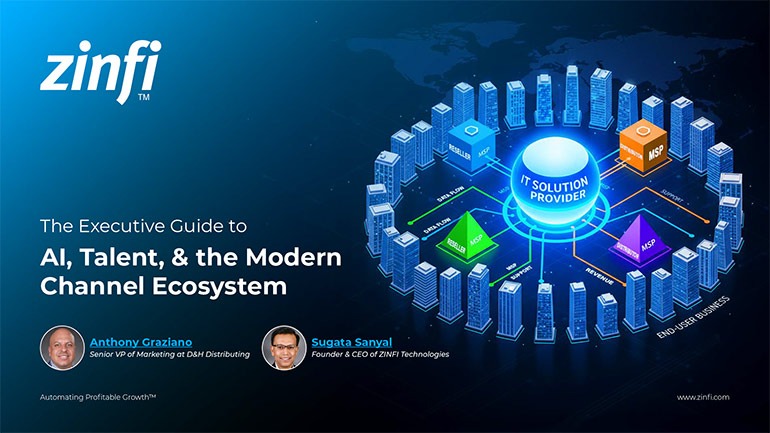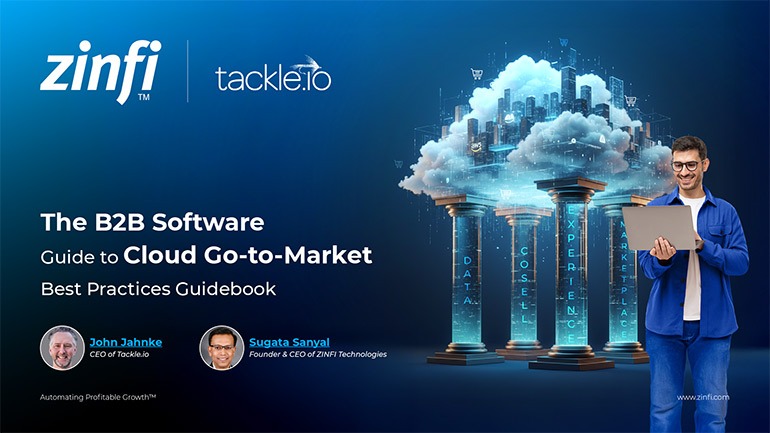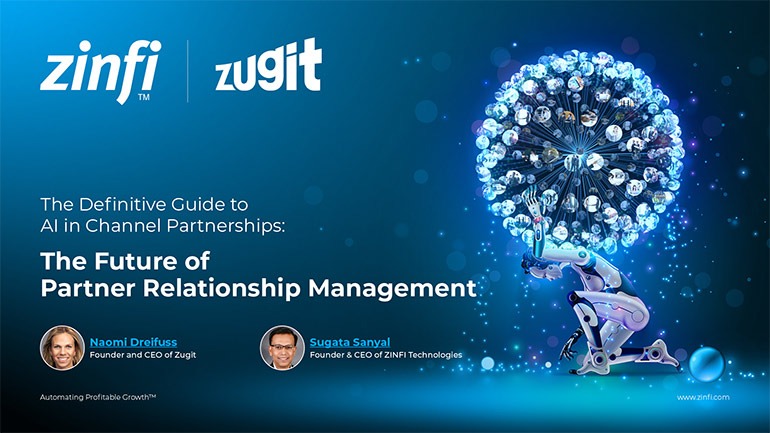Best Practices Articles

Partner Deal Registration System: Orchestrating Channel Sales for Predictable Growth
A deal registration system is a vital tool for businesses. It helps manage sales through partners, like resellers or distributors. This system ensures fairness and clarity in sales. It also allows companies to predict their income better.
What is Deal Registration?
Deal registration is a structured, formalized process at its most fundamental level. It allows channel partners to formally notify and register a specific sales opportunity with the vendor. This typically occurs at an early, well-defined stage of the sales cycle. It explicitly declares the partner's intent to actively pursue a prospective customer for a specific product, service, or solution. The act of "registering a deal" goes beyond a simple notification; it serves as a formal claim by the partner to that specific opportunity. Once the vendor reviews and formally approves the registration, the system typically grants that partner deal protection for a predefined period. This protection signifies that no other partner within the ecosystem (and crucially, often not even the vendor's direct sales team) is permitted to pursue the identical opportunity without risking a direct conflict or, more importantly, the loss of sales credit and associated compensation.
How Does Deal Registration Work?
A robust deal registration system integrates people, processes, and technology to ensure seamless operation. It has several key operational elements:
- Partner-Facing Submission Interface: Partners start the process by submitting detailed information about the prospective customer—such as company name, key contacts, industry, estimated size, the product or solution they plan to propose, estimated deal size, and anticipated close date. They complete this through a secure, intuitive online portal, their main digital gateway. The PRM system powers this partner portal, offering user-friendly forms, built-in validation rules, and streamlined submission capabilities.
- Automated Validation and Conflict Checking: The system automatically runs a series of checks upon submission. This includes verifying if another partner has already registered the account if it's a current direct account of the vendor, and if it's a "house account" or on a "do not call" list. It also validates against predefined program rules (e.g., minimum deal size, product eligibility). The PRM's backend logic, often integrated with the vendor's CRM, performs real-time duplicate detection and conflict resolution algorithms.
- Configurable Workflow and Approval Engine: The system automatically routes validated registrations to the appropriate internal vendor personnel for review and approval. The system routes each registration based on criteria such as geographic territory, specific product lines, estimated deal value, partner tier, or proposed solution type. Complex deals may require multi-level approvals (e.g., channel manager, regional sales director, legal). The PRM's workflow engine automates these routing and approval processes, sending notifications and reminders to approvers and partners.
- Deal Protection and Rules Engine: Once approved, the deal is formally "protected" for the registering partner. The system enforces time-bound protection—typically 90, 120, or 180 days—and may link it to specific products or services. It also manages renewal or extension requests for deals that are still progressing but need more time. The PRM's rules engine actively monitors the protection period and benefits, automatically flagging any conflicts or expired registrations.
- Real-time Tracking and Status Updates: The registering partner and the vendor's internal channel team can continuously monitor the deal's progress. Partners can update deal stages, add notes, upload relevant documents, and request vendor assistance through the portal. The PRM provides real-time dashboards and detailed deal records accessible to both parties, ensuring transparency and a shared understanding of the opportunity's status.
- Automated Attribution and Compensation Linkage: When a partner closes a protected deal, the system automatically assigns sales credit and links it to the correct compensation structure—such as commissions or rebates. This process removes ambiguity and prevents disputes. The PRM’s attribution engine, integrated with the vendor’s financial or incentive systems, automates credit allocation and triggers the compensation workflow.
A Partner Deal Registration System is thus a sophisticated orchestration of digital tools and well-defined operational procedures. The system formalizes how partners pursue sales opportunities in the channel. It ensures unmatched clarity, consistent fairness, and full accountability.
Why is Deal Registration Important?
Without a robust and intelligently designed Partner Deal Registration System, channel programs, particularly those with many partners or operating in competitive markets, are highly susceptible to debilitating problems. These problems directly impact revenue attainment, operational efficiency, and the fundamental health of partner relationships. A meticulously implemented system is critical precisely because it directly and comprehensively solves these pervasive challenges:
- Eliminating Channel Conflict (The "Land Grab" Problem): Without a formalized registration process, multiple partners might inadvertently, or even intentionally, pursue the identical prospective customer for the same opportunity. This chaotic scenario inevitably leads to damaging competitive bidding, aggressive price undercutting, profound confusion for the end customer, and severe damage to the relationships between partners and the vendor. Furthermore, the vendor's direct sales teams might inadvertently compete directly with their channel partners, leading to internal friction and lost sales. A Partner Deal Registration System provides an ironclad "first-to-register, first-to-protect" mechanism. Once the vendor formally approves and protects a deal, the system reserves it exclusively for that specific partner for a set period. This process eliminates internal competition, clarifies deal ownership, and creates a collaborative environment where partners feel secure in their investments. It also defines clear boundaries between direct and indirect sales channels, preventing internal overlap.
- Achieving Unprecedented Pipeline Visibility & Forecasting Accuracy: Without a centralized, real-time system, vendors operate primarily in the dark regarding the specific sales opportunities their partners are actively pursuing. This profound lack of insight makes accurate sales forecasting for the channel virtually impossible, leading to unpredictable revenue streams, inefficient resource allocation, and an inability to identify market trends or potential shortfalls proactively. The Deal Registration System provides a consolidated, real-time, and dynamic view of all partner-generated opportunities. Channel managers gain comprehensive visibility into the entire channel pipeline, can meticulously track deal stages, monitor progress, and forecast indirect revenue with significantly greater accuracy. This empowers better strategic planning, resource deployment, and proactive intervention.
- Ensuring Accurate Sales Attribution & Fair Compensation: If there exists no formal, auditable record of which partner originated or significantly influenced a deal, attributing revenue credit becomes a subjective, contentious, and often arbitrary process. This inevitably leads to disputes over commissions, rebates, and other incentives, severely eroding partner trust, demotivating high performers, and potentially leading to legal challenges. Partners may feel their substantial efforts are not being adequately recognized or fairly compensated. The Deal Registration System creates an undeniable, immutable audit trail for every opportunity. It ensures that the partner who identified registered, and actively pursued the deal receives precise credit upon its successful closure. This streamlines complex compensation calculations, eliminates ambiguity, and fosters unparalleled transparency and trust within the partner ecosystem.
- Combating Partner Disengagement & Boosting Motivation: Channel partners disengage when they face constant conflict, see their efforts go unrecognized, or struggle with confusing and inefficient operational processes. Disengaged partners often shift their focus to vendors who offer clearer, more supportive, and more transparent channel programs. This shift leads to costly partner churn and a reduced channel footprint.
- A well-defined, equitable, and transparent Deal Registration System shows partners that the vendor values their time and effort. It proves the vendor's commitment to protecting partner investments and fairly rewarding their contributions. This trust encourages partners to bring forward more high-value opportunities, invest in joint marketing and sales, and deepen their commitment to the long-term partnership.
- Optimizing Lead Management & Ensuring Effective Follow-up: Without a structured system, leads passed from the vendor to partners might get lost in translation, or partners might fail to follow up effectively if there's no formal tracking, accountability, or incentive structure tied to lead conversion. The Deal Registration System often integrates seamlessly with lead distribution functionalities. The system assigns vendor-generated leads to the most appropriate partner and meticulously tracks their progress. This setup encourages partners to follow up promptly and effectively, which improves lead conversion rates and increases ROI on lead generation efforts.
By directly and comprehensively addressing these fundamental challenges, a Partner Deal Registration System transcends being merely a technological convenience; it becomes an indispensable strategic asset for any organization genuinely committed to building a high-performing, loyal, and predictably profitable channel ecosystem.
Key Features of a Robust Deal Registration System
A truly effective Partner Deal Registration System, typically operating as a central and sophisticated module within a comprehensive Partner Relationship Management (PRM) platform, extends far beyond basic form submission. It offers an integrated suite of functionalities meticulously designed to optimize the entire deal lifecycle for both vendors and their channel partners:
- Intuitive & User-Friendly Partner Interface: The deal submission form must be straightforward, clear, and quick for partners to complete. An overly complex or cumbersome process will inevitably lead to low partner adoption and frustration. Partners must be able to easily view the real-time status of their registered deals (e.g., pending review, approved, rejected, closed-won/lost, on hold) directly within their personalized partner portal dashboard. The interface must be fully optimized for mobile devices (smartphones and tablets), enabling partners to register deals, update statuses, and access information conveniently while on the go.
- Automated Conflict Checking & Intelligent Validation Engine: The system automatically identifies if another partner has already registered a lead, account, or specific opportunity or if the vendor's direct sales team is actively pursuing it. It verifies if the proposed customer already has a direct account with the vendor, preventing direct-channel conflict. Configurable rules allow the system to automatically validate deal parameters (e.g., minimum deal size, specific product/service eligibility, geographic territory, partner tier, industry focus) against predefined program requirements, ensuring compliance from the outset.
- Configurable Workflow & Multi-Level Approval Processes: The system automatically routes new deal registrations to the appropriate internal vendor personnel for review and approval. It uses predefined rules—such as estimated deal size, geographic territory, product line, partner tier, or solution type—to guide this dynamic routing. The system supports complex approval hierarchies, allowing for sequential or parallel approvals from multiple stakeholders (e.g., channel manager, regional sales director, legal counsel, finance department) for high-value or strategic deals. The system sends instant, automated alerts and reminders to partners (e.g., "Deal Approved," "More Information Needed") and internal approvers (e.g., "New Deal Pending Approval"), ensuring timely action and transparency.
- Granular Deal Protection Rules & Management: The system sets and enforces a specific protection period—such as 90, 120, or 180 days—during which it exclusively reserves the registered deal for the submitting partner. It also provides a straightforward process for partners to request extensions if the deal is active but needs more time to close, preventing automatic expiration. The system can tie protection to specific products, services, or solution bundles within an account, offering flexibility in complex sales scenarios. Vendors can assign different levels of deal protection or benefits based on partner tier or deal type.
- Deep & Seamless Integration with CRM: The system ensures a seamless, real-time, bidirectional flow of lead and opportunity data between the deal registration module (residing within the PRM) and the vendor's core CRM system (e.g., Salesforce Sales Cloud, Microsoft Dynamics 365, HubSpot CRM). This integration is paramount for ensuring that direct and channel sales teams have a consolidated, accurate, and real-time view of all opportunities across the entire organization, regardless of their origin (direct or partner-sourced). It prevents data silos, eliminates manual data entry, and ensures all internal teams are working with accurate, up-to-date information, leading to better collaboration and forecasting.
- Comprehensive Reporting & Advanced Analytics: It provides dynamic dashboards and reports that display the total value, number, and stage of all registered deals across the entire channel, offering a holistic view of indirect revenue potential. It generates detailed reports on individual partner deal registration volume, win rates for registered deals, average deal velocity, average deal size, and conversion rates, enabling granular performance assessment. It tracks the number and types of conflicts encountered, their resolution rates, and the time taken for resolution, helping to refine policies. It provides tools and insights to significantly improve the accuracy of indirect revenue forecasting significantly, supporting overall business planning.
- Intelligent Lead Distribution Capabilities: If the vendor generates leads (e.g., from marketing campaigns website inquiries), the system can automatically distribute these leads to the best-fit partners based on predefined criteria such as geography, industry specialization, product expertise, or partner performance tiers. Partners use the portal to accept or reject assigned leads formally. If a partner rejects a lead, the system automatically re-routes it to ensure no opportunity gets lost.
- Comprehensive Audit Trail & Unwavering Transparency: The system maintains a complete, immutable, and time-stamped record of every action taken on a deal registration, including initial submissions, all approvals, updates, rejections, and any associated notes or communications. Partners can access and review their deals' history and real-time status, fostering unparalleled transparency, accountability, and trust in the vendor's process.
- Customizable Fields & Adaptable Workflows: You can add custom fields to capture deal information that aligns with your business needs, industry specifics, or complex sales scenarios. The system lets you configure and adapt workflows to match your channel program rules, evolving processes, and partner engagement models.
These meticulously designed features collectively ensure that a Partner Deal Registration System is not merely a gatekeeping mechanism but a dynamic and powerful strategic tool for driving unparalleled channel efficiency, fostering transparency, and accelerating sustainable growth.
The Transformative Benefits of Implementing a Partner Deal Registration System
A well-architected and effectively implemented Partner Deal Registration System delivers profound and transformative benefits for the vendor organization and its invaluable network of channel partners. It transforms channel sales into a more predictable, profitable, and harmonious endeavor.
Benefits for the Vendor:
- Significantly Increased Channel Revenue & Enhanced Predictability: Vendors gain a real-time, consolidated, and accurate view of all partner-driven opportunities. This comprehensive insight enables vastly more accurate sales forecasting for the indirect channel, facilitating superior strategic resource allocation and proactive identification of potential revenue gaps or surges. Partners are far more motivated to bring high-value deals forward by proactively eliminating channel conflict. This leads to fewer lost opportunities due to internal competition or partner disengagement, translating into higher overall channel sales volume. Deal registrations generate rich, granular data. This data reveals which partners perform best and which products gain traction through the channel. It also pinpoints exactly where to focus enablement, training, or incentive adjustments to achieve the most significant impact.
- Enhanced Channel Control & Strategic Governance: The system ensures that partners adhere strictly to program rules regarding lead qualification, pricing guidelines, geographic territories, and product eligibility. By requiring formal approval for deals, the system helps prevent unauthorized discounting, misrepresentation of products/services, or unapproved marketing claims, thereby safeguarding brand integrity and market positioning. The ability to grant preferential protection or additional incentives for registered deals allows the vendor to strategically guide partners towards specific high-priority products strategically, emerging customer segments, or strategic initiatives, ensuring channel efforts align with corporate objectives.
- Profound Improvement in Operational Efficiency: The system significantly reduces the manual effort and administrative burden traditionally involved in managing leads, opportunities, and resolving conflicts. This frees up invaluable time for channel managers. It standardizes the sales process across the entire channel ecosystem, leading to greater operational efficiency, fewer errors, and a consistent experience for all partners. Channel managers can reallocate their time from tedious conflict mediation and manual tracking to more strategic activities such as partner development, relationship building, and proactive enablement.
- Accurate Attribution & Measurable ROI: The system ensures that the correct partner receives unequivocal credit for the deal, simplifying complex commission, rebate, and incentive calculations and minimizing disputes. It provides the essential, verifiable data to accurately measure the return on investment for your channel programs, partner enablement efforts, and specific marketing development fund (MDF) allocations.
Benefits for Channel Partners:
- Unwavering Deal Protection & Significantly Reduced Risk: The system assures partners that it will formally protect their significant investments of time, effort, and resources in developing a sales opportunity from other partners or the vendor’s direct sales team. This drastically reduces the risk of being undercut or losing credit. Partners are far more willing to proactively invest their resources in pursuing promising leads when they are confident that their efforts are secured and will be recognized.
- Increased Profitability & Enhanced Incentives: Vendors frequently offer preferential pricing, higher margins, or additional incentives (e.g., increased MDF allocation, bonus SPIFFs) specifically for deals that are properly registered and approved. This directly and tangibly boosts partner profitability. The system's transparency in attribution means partners can clearly and easily see how their efforts translate into precise earnings, fostering trust and providing strong financial motivation.
- Enhanced Vendor Support & Streamlined Collaboration: Registering a deal often signals to the vendor that the partner is actively pursuing a significant opportunity and may require support. This prompts the vendor to provide prioritized resources, specialized expertise, or even direct sales assistance to help close the deal. Partners gain a clear, formalized channel to communicate deal progress, request specific vendor assistance, or share critical customer insights, improving overall collaboration.
- Improved Efficiency & Strategic Focus: Partners gain absolute clarity on which deals they are officially pursuing and have protected status, allowing them to focus their limited resources and sales efforts most effectively. Easy-to-use portals and automated workflows within the system save partners valuable time on cumbersome paperwork, manual tracking, and conflict resolution, enabling them to dedicate more time to selling.
A Partner Deal Registration System meticulously engineered creates a powerful win-win scenario: vendors gain unparalleled control, visibility, and predictability, while partners gain crucial protection, enhanced profitability, and a streamlined operational experience, culminating in a more harmonious, productive, and rapidly growing channel ecosystem.
Common Challenges Without a Partner Deal Registration System
To further underscore the absolute necessity of a robust Partner Deal Registration System, it is imperative to revisit the debilitating common pitfalls that inevitably plague channel programs operating in its absence:
- The "Wild West" Mentality: Without clear rules and a central arbiter, the channel devolves into a chaotic, every-partner-for-themselves environment. Partners engage in aggressive, often cutthroat, competition, leading to destructive price wars, erosion of profit margins, and severely damaged relationships.
- The "Shadow Channel" Phenomenon: Partners may intentionally hide promising leads or early-stage opportunities from the vendor to avoid perceived conflicts, bypass program rules, or ensure they receive full credit without vendor oversight. This creates a dangerous "shadow channel," resulting in a profound lack of vendor visibility for a significant portion of their indirect pipeline.
- Widespread Partner Disillusionment and High Churn: Vendors frustrate and discourage high-performing, valuable partners when they fail to recognize their efforts. Partners lose trust when vendors don’t protect their deals or allow frequent conflicts. Over time, this lack of support leaves partners disillusioned and disengaged. Such partners are likely to divert their resources and ultimately migrate to vendors offering clearer, more supportive, and more transparent channel programs, leading to costly partner churn.
- Significant Revenue Leakage: Vendors often lose opportunities when internal teams compete, partners abandon deals due to lack of protection, or both sides fail to coordinate. These breakdowns cause measurable revenue leakage across the organization.
- Crippling Inaccurate Sales Forecasts: Channel leadership operates in a perpetual state of uncertainty, unable to predict indirect revenue effectively due to the absence of real-time, consolidated pipeline data. This severely hampers strategic planning, resource allocation, and overall business predictability.
- Overwhelming Manual Overload: Channel managers and operations teams spend an inordinate amount of time mediating incessant conflicts, manually tracking opportunities across disparate spreadsheets, and chasing updates. This administrative burden diverts their focus from strategic partner development, enablement, and growth initiatives.
- Pervasive Disputes & Eroding Trust: Constant arguments and disagreements over deal ownership, lead attribution, and compensation erode the fundamental foundation of productive partnerships. This lack of trust makes partners hesitant to share information or invest further.
These profound and pervasive challenges unequivocally highlight that a Partner Deal Registration System is not a mere luxury or an optional enhancement; it is an absolute, fundamental requirement for any organization genuinely serious about building and scaling a successful, loyal, and predictably profitable indirect sales channel.
Best Practices for Implementing and Optimizing an Effective Partner Deal Registration System
Implementing a Partner Deal Registration System is a strategic initiative beyond simply deploying software. To truly maximize its benefits and ensure high adoption and ongoing optimization, organizations must adhere to a set of meticulously planned best practices:
- Prioritize Simplicity & Intuitive Design: Only request the essential information at the initial registration stage. Too many mandatory fields will create friction and deter partners from submitting deals. Use straightforward, unambiguous language in all forms, instructions, and policy documents, avoiding jargon. Ensure the deal registration module is prominently displayed and effortlessly accessible within the partner portal, ideally from the main dashboard. Implement tooltips, inline help, and perhaps short video tutorials to guide partners through submission.
- Establish Crystal-Clear & Consistent Rules: Meticulously document all deal registration policies, including precise definitions of what constitutes a valid lead, the exact duration of protection periods, the process for renewals, and the detailed procedures for conflict resolution. Make these policies easily discoverable and accessible within the partner portal. Ensure that all internal channel managers and external partners understand and consistently apply the rules unequivocally, conducting regular training sessions. Apply all regulations consistently and provide clear, constructive reasons for rejections, modifications, or conflict resolutions, building trust and encouraging learning.
- Ensure Rapid Approval & Provide Actionable Feedback: Leverage the system's automation capabilities to streamline approvals for standard, low-risk deals, reducing manual intervention. Establish clear internal SLAs for deal review and approval times (e.g., "all standard deals reviewed within 24 business hours") and communicate these commitments to partners. If the system rejects a deal, give the partner clear, constructive reasons. Help them understand the rejection, learn from it, and improve future submissions. This approach prevents frustration and encourages growth.
- Achieve Deep & Seamless Integration with CRM: This is paramount. Ensure real-time, bidirectional lead and opportunity data flow between the deal registration module (within your PRM) and your core CRM system (e.g., Salesforce, Microsoft Dynamics 365, HubSpot). This integration is critical for ensuring that direct and channel sales teams have a consolidated, accurate, and real-time view of all opportunities across the entire organization, regardless of origin. Design processes to eliminate any need for channel managers or partners to manually re-enter data between systems, a significant source of errors and inefficiency.
- Strategically Offer Strong Incentives for Registration: The most fundamental incentive is the guarantee of deal protection, providing the partner with exclusivity on the opportunity. Offer preferential pricing, higher margins, or additional bonus incentives (SPIFFs) specifically for properly registered and approved deals. Provide dedicated, accelerated sales or technical support for registered deals, tangibly demonstrating the value and benefit of formal registration. Link access to Market Development Funds (MDF) or co-op marketing funds to register qualified opportunities, incentivizing proactive engagement.
- Provide Comprehensive Training & Accessible Support: Develop explicit, concise, and engaging training materials (e.g., short video tutorials, quick-start guides, interactive webinars) specifically for partners in using the deal registration module effectively, always highlighting the benefits to them. Ensure your internal channel teams are proficient in managing, reviewing, approving, and troubleshooting deal registrations. Provide clear and easily accessible channels for partners to get help if they encounter issues with the system or the process (e.g., in-portal chat, dedicated support email, knowledge base articles).
- Implement Continuous Monitoring & Optimization: Regularly analyze critical metrics related to deal registration, including volume of registered deals (total, by partner, by region), approval rates and rejection reasons, win rates for registered deals vs. non-registered deals, average deal velocity (time from registration to close), average deal size, conflict resolution times and frequency, and partner adoption rates of the system. Proactively solicit partner and internal team feedback through surveys, user groups, and direct communication channels. Use the collected data and feedback to make continuous, data-driven improvements to your deal registration policies, automated workflows, and software configuration, ensuring the system remains efficient and effective.
By meticulously adhering to these best practices, organizations can transform their Partner Deal Registration System from a mere administrative necessity into a dynamic, powerful strategic lever for accelerating channel growth, fostering unparalleled partner satisfaction, and ensuring predictable revenue streams.
Partner Deal Registration System's Role in the Broader Tech Stack: PRM vs. CRM Revisited
As previously established, while Customer Relationship Management (CRM) is a vital tool for managing direct customer relationships and is the backbone of a robust Revenue Operations (RevOps) strategy, it inherently lacks the specialized functionalities required for comprehensive channel management. The Partner Deal Registration System is a prime and quintessential example of this critical distinction.
- CRM's Inherent Limitation: A CRM's native lead and opportunity management modules are fundamentally designed and optimized for internal sales teams and direct customer interactions. They inherently lack the nuanced rules, the sophisticated conflict-checking mechanisms specific to a multi-partner environment, the capabilities for multi-partner attribution, and the external-facing portal functionalities indispensable for effective deal registration within a complex channel context. Customizing a CRM to force-fit these partner-specific requirements is typically prohibitively costly, technically complex, and ultimately compromises the CRM's core function for direct sales.
- PRM's Unmatched Strength: The Partner Deal Registration System is a core, foundational, and purpose-built module within a comprehensive Partner Relationship Management (PRM) system. PRM is meticulously engineered from the ground up to manage the entire partner lifecycle, and deal registration is central to that mission. It provides the intuitive, branded, partner-facing portal, the specialized workflows, the intelligent conflict resolution logic, and the channel-specific analytics that a CRM simply does not offer natively.
- The Power of Seamless Integration: The ideal and most effective scenario is a seamless, bidirectional integration between your PRM's Partner Deal Registration System and your CRM. This allows partners to register deals effortlessly within their familiar PRM portal while the approved opportunities automatically flow into the CRM's sales pipeline. This critical integration ensures a unified, holistic view of all revenue (both direct and indirect) for sales leadership, enables vastly more accurate forecasting, and facilitates streamlined operations across the entire organization. This integrated approach is critical for a comprehensive Revenue Operations (RevOps) strategy that fully embraces and optimizes the channel.
Therefore, while the CRM provides the essential customer data and manages the direct sales motion, the PRM, with its robust Partner Deal Registration System, truly empowers the channel, orchestrates indirect sales, and feeds the necessary, accurate information into the broader revenue system.
Partner Deal Registration System as a Pillar of ZINFI's PartnerOps Framework
ZINFI's PartnerOps Framework provides a comprehensive, eight-pillar blueprint for strategically optimizing every phase of the partner journey, thereby ensuring predictable and scalable channel growth. While supporting others, the Partner Deal Registration System plays a pivotal and central role within this framework, particularly in the "Co-Sell" and "Accelerate" pillars.
- Co-Sell: The Partner Deal Registration System is the primary and indispensable mechanism for formalizing and orchestrating co-selling efforts between the vendor and its partners. The system defines clear opportunity ownership, aligns partners and internal sales teams on specific deals, prevents conflict proactively, and facilitates seamless collaboration. It represents the crucial first step in a structured and efficient co-selling motion, providing immediate and transparent visibility into the partner-driven pipeline. By streamlining and automating the deal registration process, PartnerOps ensures that co-selling motions are highly efficient, transparent, and mutually beneficial. This leads to higher win rates for channel-sourced deals, accelerated sales cycles through the channel, and a more harmonious working relationship.
- Accelerate: The rich, granular data meticulously collected through the Partner Deal Registration System (e.g., deal volume, deal velocity, win rates, average deal size, product mix) is critical for advanced analytics. Channel leaders use this data to identify top-performing partners with precision. They also track which products or solutions gain the most traction through the channel. This insight helps them target specific areas for enablement, adjust incentives, and refine programs to drive better results. PartnerOps leverages these deep insights derived from deal registration data to refine and optimize enablement programs continuously, adjust incentive structures for maximum impact, and fine-tune recruitment strategies. This data-driven approach directly accelerates overall channel performance and maximizes the return on investment from indirect sales channels.
Beyond these two primary pillars, the Partner Deal Registration System also indirectly but significantly supports other crucial aspects of the PartnerOps Framework:
- Incentivize: By providing accurate and verifiable attribution for closed deals, the system forms the foundation for precise calculation and transparent payout of commissions, rebates, and other incentives, ensuring fairness and motivating partners.
- Enable: The data from deal registrations can highlight specific areas where partners might require additional training, sales tools, or technical support to close deals, guiding enablement efforts effectively.
- Strategize: Aggregated deal registration data informs overall channel strategy by revealing market trends, partner strengths, and program expansion or refinement opportunities.
In essence, the Partner Deal Registration System is not just a feature; it is a foundational, mission-critical process that, when powered by a robust PRM and intelligently integrated within a comprehensive PartnerOps framework, acts as an indispensable enabler for predictable revenue growth, fosters unwavering partner trust, and cultivates robust partner relationships.
Conclusion
In modern business's intensely competitive and rapidly evolving landscape, a thriving and efficiently managed indirect sales channel is a powerful and often decisive differentiator. At the heart of such a channel's success lies the meticulous implementation and continuous optimization of a Partner Deal Registration System. Far more than a simple administrative tool, this system is the strategic cornerstone that actively builds and sustains trust, proactively prevents costly conflicts, and provides unparalleled, real-time visibility into your entire channel sales pipeline.
By offering a clear, fair, and transparent mechanism for channel partners to protect their hard-won opportunities formally, a Partner Deal Registration System motivates them to invest more deeply in promoting your products and nurturing their customer relationships. For vendors, this translates directly into enhanced channel control, more accurate forecasting capabilities, and the ability to precisely attribute revenue, ensuring that every partner's invaluable contribution is unequivocally recognized and appropriately rewarded.
While your Customer Relationship Management (CRM) system remains an indispensable tool for managing your direct customer relationships and serving as the backbone of your direct Revenue Operations (RevOps), it is a dedicated Partner Relationship Management (PRM) system, with its specialized and robust Partner Deal Registration capabilities, that truly empower your channel partners and enables a sophisticated Partner Operations (PartnerOps) strategy. The seamless, bidirectional integration between these two complementary platforms creates a unified, holistic revenue engine, providing comprehensive visibility and driving predictable, scalable growth across all your sales channels. By embracing the best practices in deal registration, organizations can transform what could otherwise be a chaotic and contentious environment into a meticulously orchestrated, highly profitable, and deeply harmonious channel ecosystem, thereby securing a formidable and sustainable competitive advantage in the market.
Best Practices Guidebook
 Modernizing Channel Marketing: AI and Ecosystem Enablement Best Practices
Modernizing Channel Marketing: AI and Ecosystem Enablement Best PracticesDownload for FREE
 The Channel’s Shift to Partner-Led With AI Best Practices
The Channel’s Shift to Partner-Led With AI Best PracticesDownload for FREE
 Hyperscalers, ISVs, and AI: Shaping the Future of B2B Software Distribution
Hyperscalers, ISVs, and AI: Shaping the Future of B2B Software DistributionDownload for FREE
 Definitive Guide to a Partner Ecosystem-First Sales Strategy
Definitive Guide to a Partner Ecosystem-First Sales StrategyDownload for FREE
 The Partner-Led Digital and AI Transformation Best Practices
The Partner-Led Digital and AI Transformation Best PracticesDownload for FREE
 Startup Talent Recruitment: Hiring Missionaries, Not Mercenaries
Startup Talent Recruitment: Hiring Missionaries, Not MercenariesDownload for FREE
 The Future of Partner Relationship Management with AI in Partnerships
The Future of Partner Relationship Management with AI in PartnershipsDownload for FREE
 Cybersecurity for the 99%: Strategies from the Frontline
Cybersecurity for the 99%: Strategies from the FrontlineDownload for FREE
 Mastering Partner Relationships: A Strategic Approach to Business Growth
Mastering Partner Relationships: A Strategic Approach to Business GrowthDownload for FREE
 Mastering Partner Relationship Management: Keys to SaaS Channel Success
Mastering Partner Relationship Management: Keys to SaaS Channel SuccessDownload for FREE
 Navigating the AI Revolution: Guide for Partners in the Microsoft Ecosystem
Navigating the AI Revolution: Guide for Partners in the Microsoft EcosystemDownload for FREE
 Mastering the Modern Buyers Journey: Sales Leader’s Guide to AI & Engagement
Mastering the Modern Buyers Journey: Sales Leader’s Guide to AI & EngagementDownload for FREE










